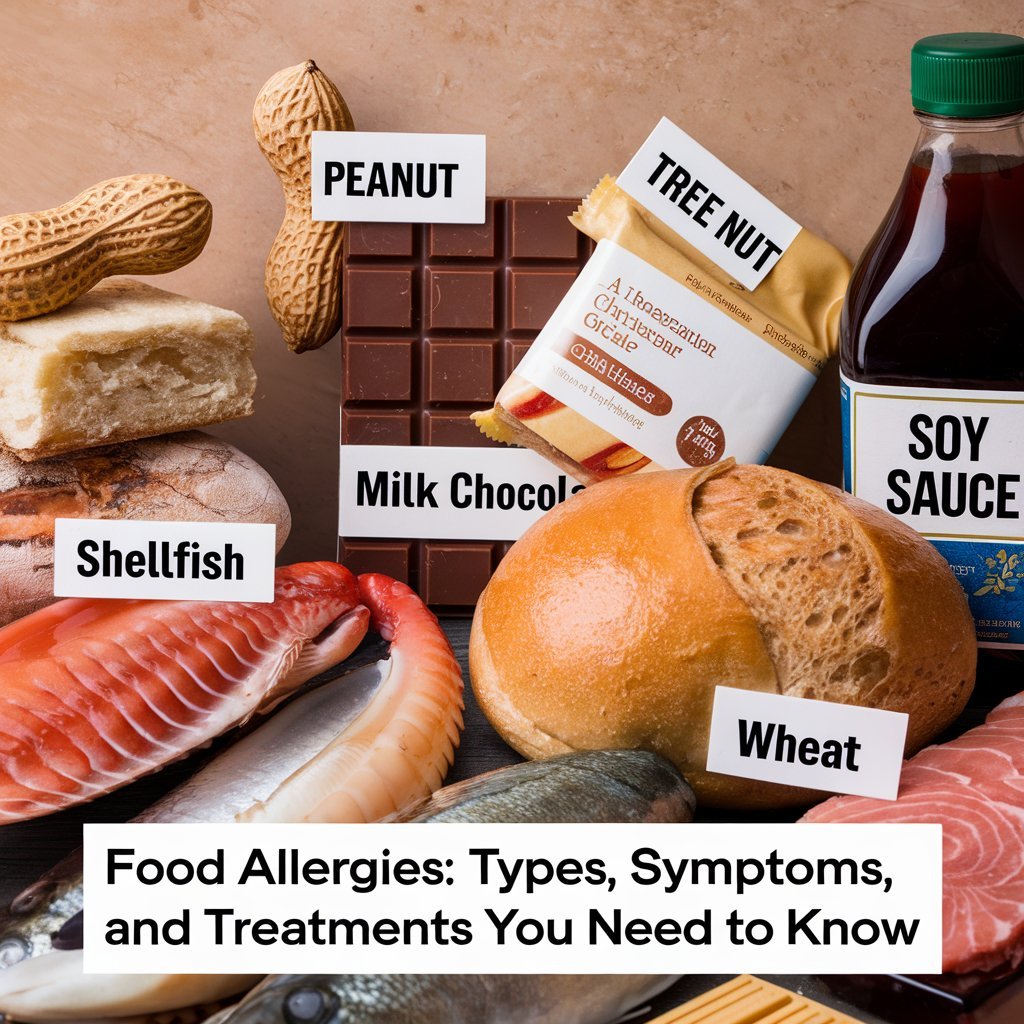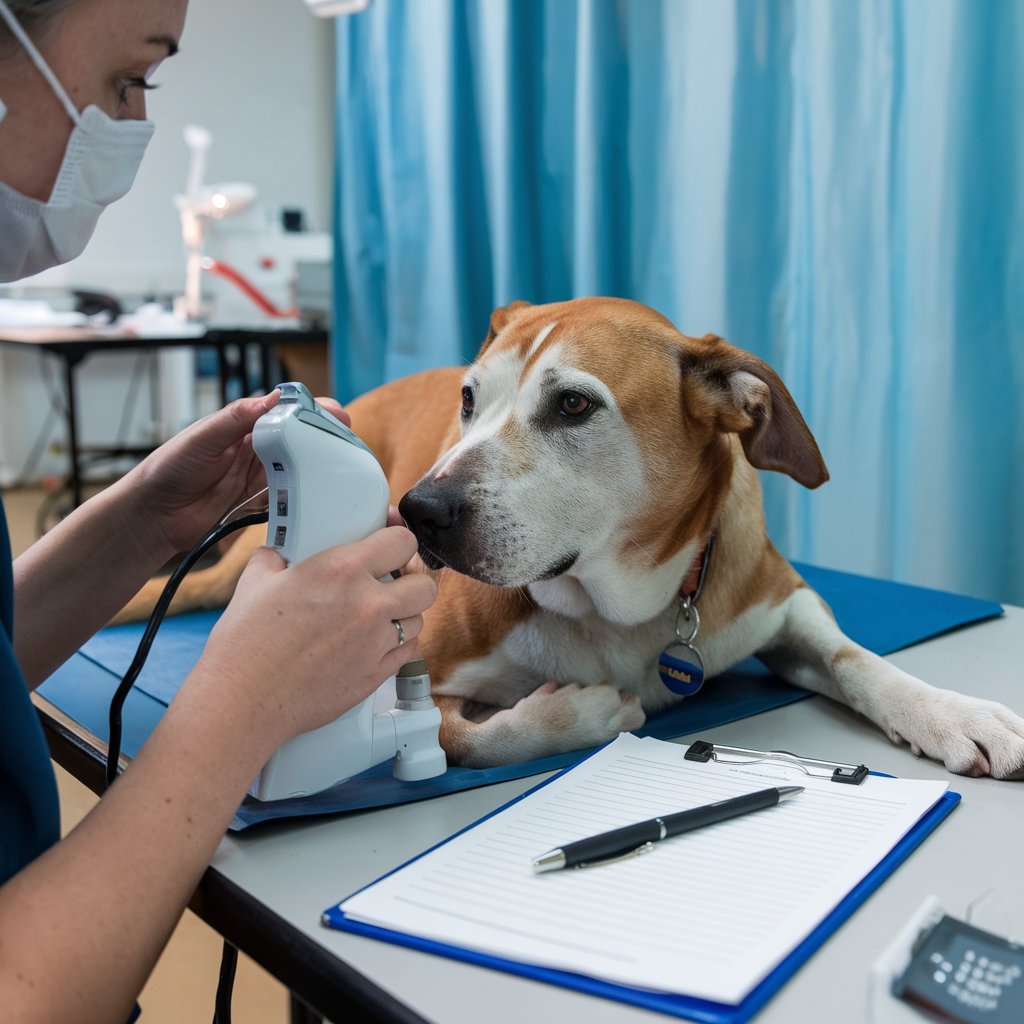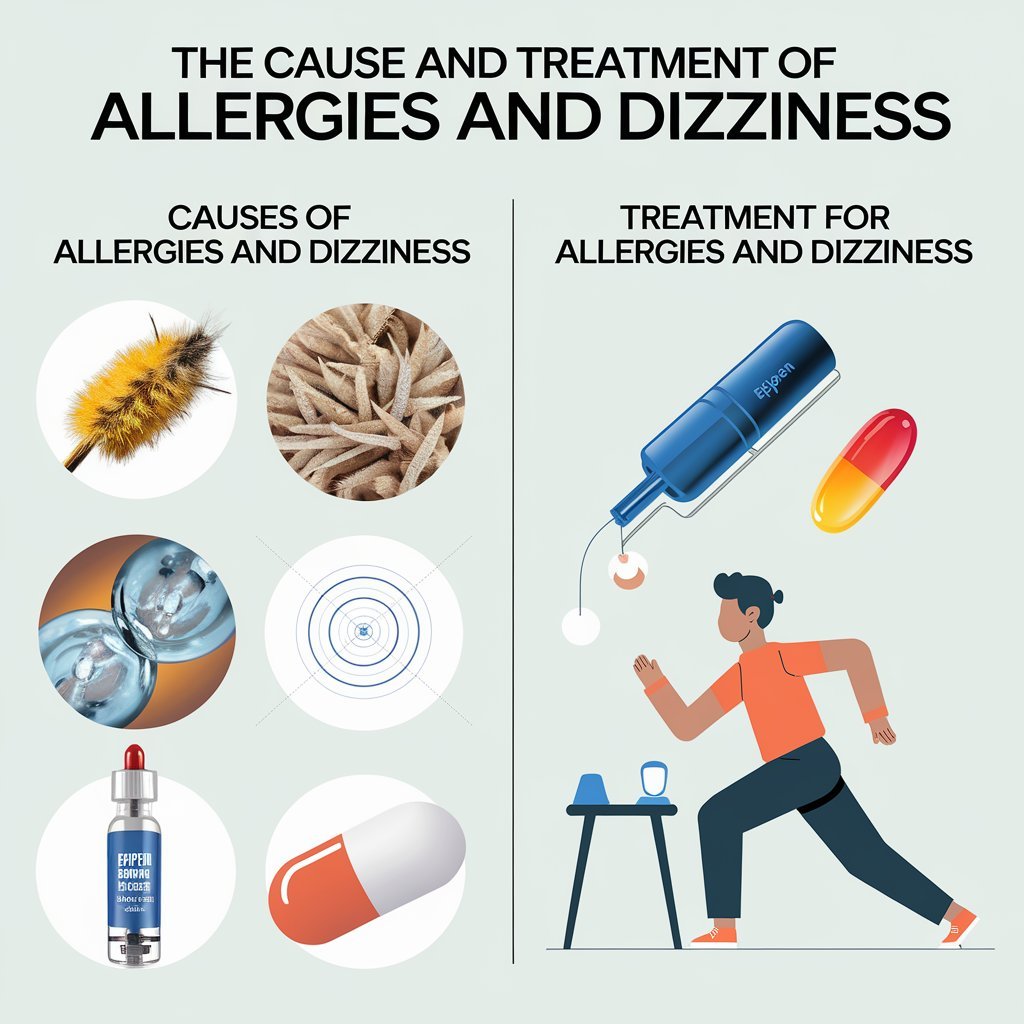A food allergy is a condition in which the immune system of the body mistakenly identifies proteins in some foods as harmful and causes an allergic reaction. More than 170 foods can cause allergic reactions. Eggs, milk, peanuts, tree nuts, fish, shellfish, soybeans, and sesame are among the most common food allergens.
Symptoms of a food allergy begin from a few minutes to two hours after consuming the allergen, and symptoms vary from mild to life-threatening. Hives and digestive problems are among the more common symptoms.
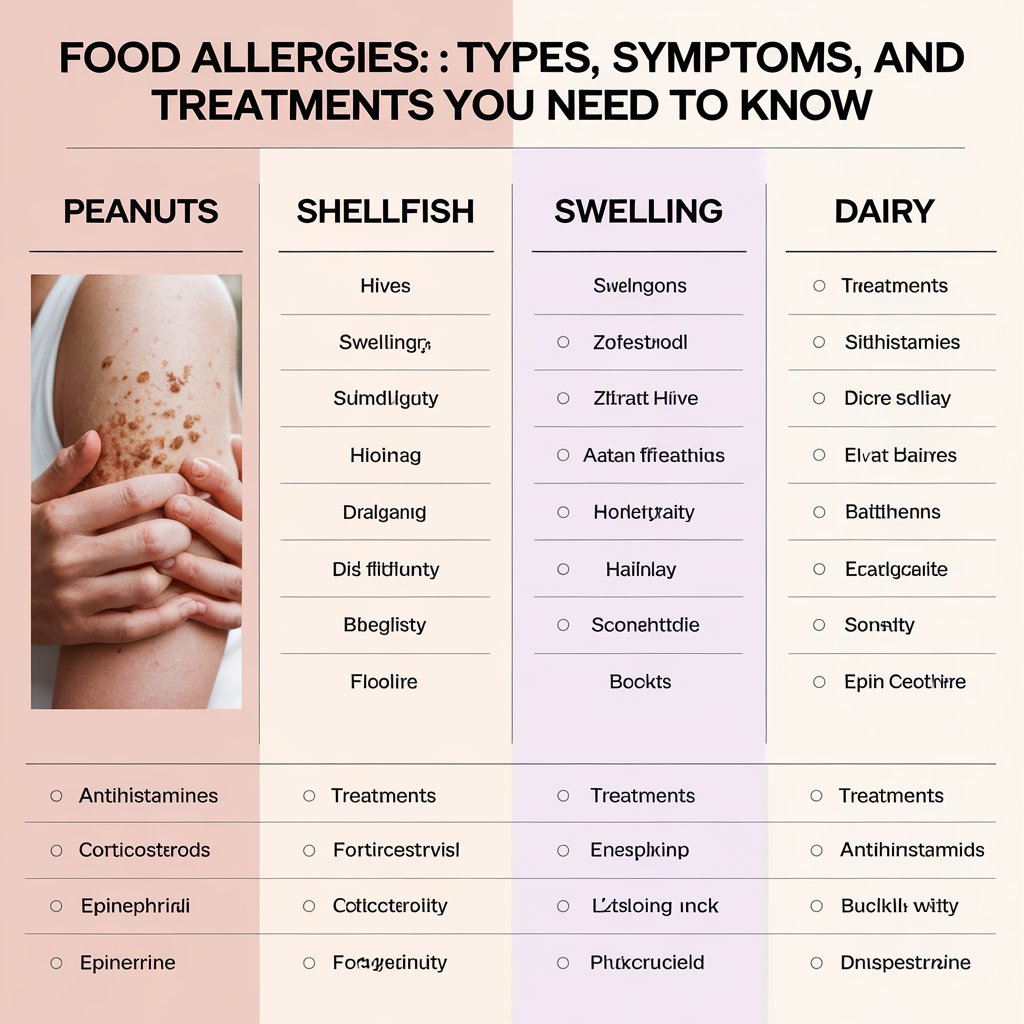
Food allergies affect more than 20 million adults and children in the United States alone. Although there is no cure for food allergies, careful management and avoidance of food allergens, along with medications for reducing allergy symptoms, can help people with food allergies live well.
Types
Food allergies can broadly be categorized as either immunoglobulin-E-mediated (IgE-mediated) or non-IgE-mediated. All forms of food allergy involve an immune system response but differ in that the type relies on how it responds and in the chemicals it releases during exposure to the allergen
Immunoglobulin-E-mediated (IgE-mediated)
IgE-mediated food allergy involves the immune system producing immunoglobulin E (IgE) antibodies. These antibodies stimulate the release of inflammatory immune chemicals such as histamine, which causes allergy symptoms.
The allergic reaction can be a few minutes to two hours after exposure, affecting the skin, heart, lungs, mouth, eyes, gut, and brain through IgE-mediated food allergens.
Non-IgE-Mediated
Non-IgE-mediated food allergies are involved in other immune system components within the gut. They take more time to present themselves, which could be after up to three days after the allergen is exposed to a person. Non-IgE-mediated food allergies majorly affect the GI system and may include lungs or skin
Food Allergy Symptoms
Symptoms of food allergy can be mild, moderate, or severe and even life-threatening. Symptoms are usually seen between minutes to a few hours after the ingestion of the allergen. They impact various body systems, such as the skin, brain, digestive, and respiratory systems.
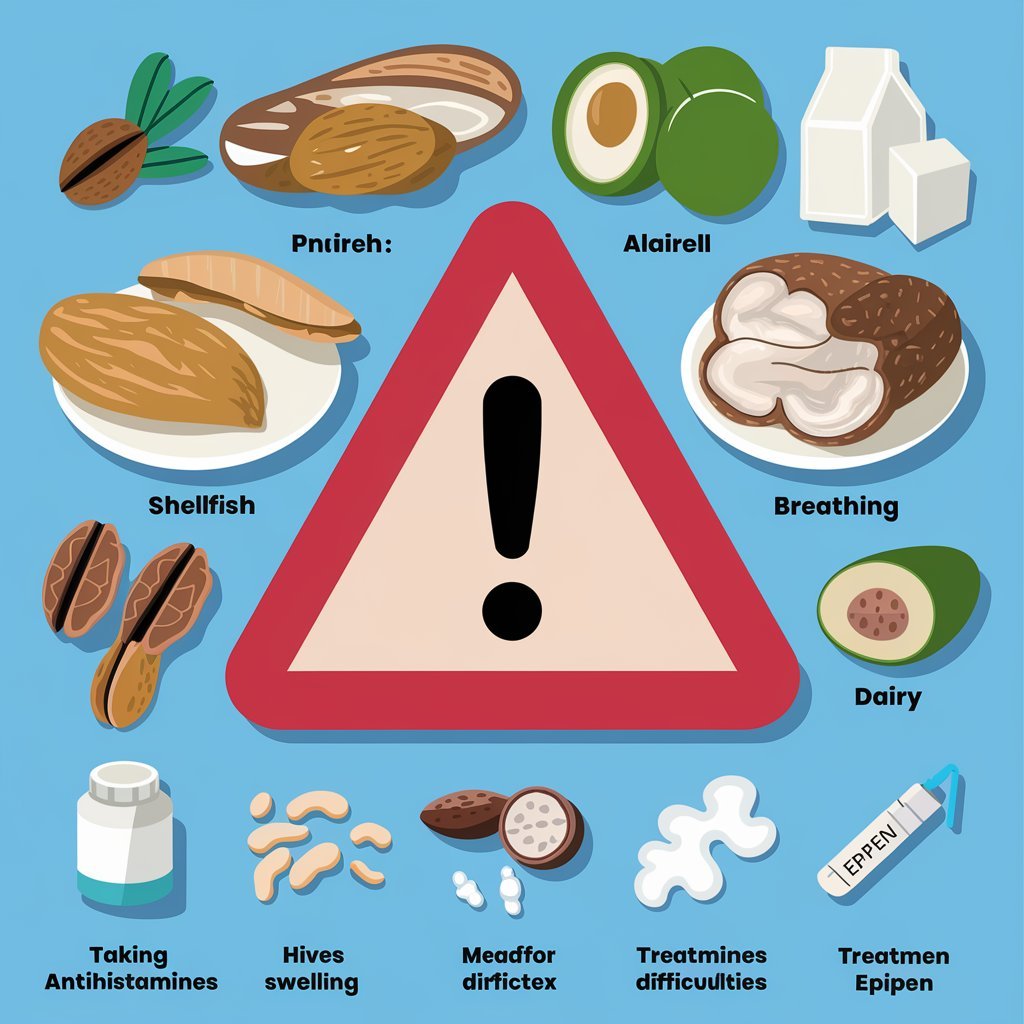
- Skin rash or hives (red, itchy bumps)
- Flushed (red) skin
- Itchy or tingling sensations in the mouth or nose
- Runny nose
- Cough
- Wheezing (whistling noises when breathing)
- Abdominal cramping
- Vomiting
- Diarrhea
- Itchy, watery eyes
- Dizziness or lightheadedness
Anaphylaxis Symptoms
A food allergy may trigger anaphylaxis-a potentially life-threatening reaction. It might start with some minor symptoms that later quickly worsen following the intake of an allergen. Anaphylaxis is a medical emergency and needs prompt treatment. Its symptoms include:
- Hives
- Throat or chest tightness
- Facial swelling, including the eyes, lips, mouth, and tongue
- GI symptoms such as abdominal pain, nausea, vomiting, or diarrhea
- Heart palpitations
- Nasal congestion
- Difficulty breathing or swallowing
- Hoarseness or slurred speech
- Feeling anxious or a sense of doom
- Loss of consciousness (fainting)
What Causes Food Allergies?
Food allergies are caused when the immune system mistakenly identifies proteins in certain foods as harmful and mounts an immune response. If you have a food allergy, touching, eating, or breathing in proteins from specific foods-allergens-releases immunoglobulin E (IgE) antibodies in your immune system. These antibodies attach to two types of immune cells: mast cells and basophils
Subsequent or later ingestion or exposure to the same food allergen causes the allergen to bind to the IgE-bonded immune cells. The cells release large amounts of inflammatory chemicals like histamine that lead to allergy symptoms
Non-IgE-mediated food allergies occur when the immune system causes the release of inflammatory cells and proteins, like T-cells and cytokines, which weaken the protective intestinal barrier, causing gut inflammation. This research indicates that this gut inflammation results in allergies to some food proteins among people suffering from non-IgE-mediated food allergies, and they suffer GI symptoms like vomiting, diarrhea, and abdominal cramping.
Researchers are still trying to understand why some people develop food allergies and what factors contribute to their development, but the evidence suggests genetics combined with environmental factors.
Risk Factors
Some risk factors increase the likelihood of developing food allergies, such as:
- Family history: If a parent or sibling has allergies, your risk increases.
- Sex: Food allergies that start in childhood are more common in individuals assigned male at birth, and adult-onset allergies are more common in people assigned female at birth.
- Allergic conditions: There is a propensity for people suffering from other allergic conditions, including eczema and asthma, to develop food allergies.
- Changes in the gut microbiome: Environmental factors that alter the gut microbiome may contribute to the development of food allergy. Overuse of antibiotics, sterile indoor environments, and a diet high in fat can lead to changes in the gut microbiome and increase the risk of food allergies
Diagnosis
Diagnosing a food allergy is a complex process that requires the expertise of an allergist-immunologist (allergist). These medical doctors diagnose and treat allergies, asthma, and other immune-related conditions
The provider will thoroughly review your medical history and ask about your symptoms and potential trigger foods. This includes:
- Your diet
- What foods (if you know) trigger allergy symptoms
- What symptoms you experience, how quickly they develop after eating the food(s), and how long they last
- Whether you develop allergy symptoms every time you eat the food
- What treatments you use (if any) after developing allergy symptoms
Allergy Tests
Allergy tests can be helpful in identifying food allergens. These tests include:
- Skin prick test: Your healthcare provider will prick the skin on your arm or back with a sterile probe and insert a tiny amount of food allergen. If you are allergic to the allergen(s), you will develop skin allergy symptoms within 15-30 minutes, such as itchiness or a wheal (small bump).
- Blood test: The blood tests measure the IgE antibodies in your blood specific to the food(s) that you may be allergic to. It can, therefore, indicate a food allergy through the IgE antibody blood tests, but cannot predict the severity of allergic reactions if you eat the food.
- Elimination diet: If it is not clear which foods are causing allergies, your allergist may recommend an elimination diet. This includes keeping a daily food diary of the foods you eat, symptoms you experience, and medications you take. Your allergist may recommend avoidingspecific foods for 1-3 weeks to see if your allergy symptoms decrease. They may suggest gradually reintroducing the food and monitoring symptoms.
- Oral food challenge: This is the gold standard in food allergy diagnosis. It involves consuming gradually increasing amounts of the suspected food allergen under careful medical supervision to observe for allergic reactions.
Treatment
After you are diagnosed with a food allergy, your allergist will work with you to create a treatment plan that will prevent allergic reactions and minimize symptoms when they do occur. Your treatment plan may include avoiding allergens and developing an emergency plan.
Allergen Avoidance

The best way to avoid allergic reactions is through strict avoidance of food allergens. This requires:
- Carefully read food labels while grocery shopping
- Pay close attention to ingredients when eating out
- Be mindful of hidden allergens in processed foods
- Stay alert about cross-contact when cooking or eating out
Emergency Preparedness
Your allergist may recommend creating an anaphylaxis emergency action plan that details what to do following exposure to a food allergen. Your plan may include instructions on how to recognize symptoms of anaphylaxis and how to administer epinephrine.
Individuals with food allergies should carry an epinephrine auto-injector, known as an EpiPen. This medication treats severe allergic reactions called anaphylaxis in case of accidental exposure to an allergen. Epinephrine is a medication available in single-dose, pre-filled automatic injection devices and is life-saving if given at the onset of allergy symptoms.
Medications
Medications can be used to control mild allergic reactions that occur due to accidental exposure to an allergen. Antihistamines such as Benadryl (diphenhydramine) and Zyrtec (cetirizine) inhibit histamines, which may help alleviate symptoms such as hives, itching, and runny noseHealthcare providers may administer corticosteroids in the emergency room following a severe allergic reaction to reduce inflammation and prevent symptoms from recurring.
Oral Immunotherapy
Food allergy oral immunotherapy is a treatment where increasing amounts of the food allergen are introduced gradually under medical supervision. The goal is to desensitize the immune system and build a tolerance to the food, potentially reducing or eliminating the allergic response.
The only oral immunotherapy product that has FDA approval is peanut oral allergen powder, branded as Palforzia. The medication is accessible currently only to people with a peanut allergy, which may potentially reduce the occurrence and severity of allergic symptoms during accidental exposure
Biologic Therapy
Biologic therapy works by targeting and blocking immunoglobin E (IgE), the antibodies that cause food allergy reactions. Xolair, or omalizumab, is an injectable medication approved by the FDA for adults and children with food allergies. One Xolair injection every 2-4 weeks may increase tolerance to allergens and reduce the risk of allergic reactions.
How To Prevent Food Allergies
There is no known method of preventing food allergies in adults, but some emerging evidence shows that the condition may be prevented in infants and children.
- Early introduction: The introduction of allergenic foods like peanuts and eggs early in infancy might prevent allergies to such foods. According to experts, introducing safe forms of peanut and other allergen foods should be done when babies are ready for solid foods, which is at 4-6 months of age.
- Breastfeeding: There are some studies indicating that breastfeeding may protect infants against allergic conditions, including food allergies.
Related Conditions
Individuals with food allergies are more likely to have or develop other conditions that share similar immune-related responses, including
- Eczema (atopic dermatitis): This chronic skin condition causes dry, itchy, inflamed patches of skin. Up to 40% of people with eczema have one or more food allergies.
- Asthma: This chronic respiratory disease leads to wheezing, coughing, and labored breathing. Food allergy may exacerbate asthma symptoms and even predispose the patient to a severe asthma exacerbation (asthma attack).
- Allergic rhinitis, or hay fever: Food allergy can co-exist with other allergies, such as airborne allergens like pollen. Although the allergens differ, both are characterized by overreaction of the immune system.
- Eosinophilic esophagitis: A condition that develops when high amounts of white blood cells called eosinophils accumulate in the esophagus and cause inflammation, leading to difficulty swallowing, chest pain, and feeling like something is stuck in the throat.
Living With Food Allergies
Living with food allergies requires careful management and vigilance, but it doesn’t have to limit your quality of life. Most people with food allergies can lead full and active lives by avoiding food allergens and establishing an emergency plan in case of accidental exposure.
Talk to your health-care provider if stress and anxiety related to a food allergy interfere with your day-to-day life. Your provider can help you get any information you need and locate resources to help you manage life with a food allergy.
